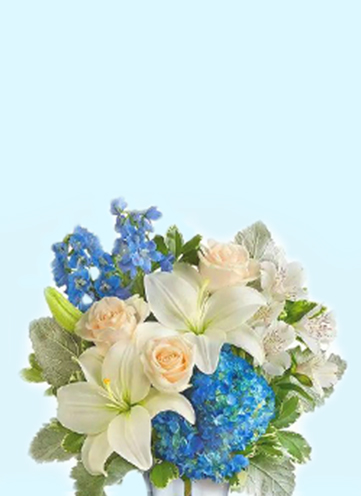Hydrangea - The Adaptive Bloomer
Posted on 04/11/2024
Hydrangeas are adored worldwide for their vibrant and large blooms, making them a staple in many gardens. With their ability to adapt to various soil types and climates, they have earned the nickname "The Adaptive Bloomer." Hydrangeas not only provide stunning aesthetics but also offer unique characteristics that make them a versatile choice for gardeners of all skill levels. In this article, we will delve into the different varieties of hydrangeas, their care requirements, and tips for ensuring they thrive.
Varieties of Hydrangeas
There are several varieties of hydrangeas, each possessing unique features. The most common types include:
- Hydrangea macrophylla (Bigleaf Hydrangea): Known for its bold and colorful flowers, this variety is sensitive to soil pH, allowing the bloom color to vary from blue to pink.
- Hydrangea paniculata (Panicle Hydrangea): Recognized for its cone-shaped flower clusters, this type is hardy and adaptable, often turning from white to pink as the season progresses.
- Hydrangea arborescens (Smooth Hydrangea): Easy to grow, with large white blooms, this variety can tolerate a range of soil conditions.
- Hydrangea quercifolia (Oakleaf Hydrangea): Noted for its oak-shaped leaves and impressive fall foliage, it features elongated flower clusters that change color from white to pink.
- Hydrangea serrata (Mountain Hydrangea): Smaller than others, this variety is known for delicate lacecap flowers and thrives in cooler climates.

Care Requirements for Hydrangeas
Hydrangeas are relatively easy to care for, provided their basic needs are met. Here are some general guidelines:
Planting
Plant hydrangeas in well-drained soil enriched with organic matter. They prefer locations with morning sun and afternoon shade. Space plants appropriately to allow for adequate air circulation and growth.
Watering
Hydrangeas need consistent moisture, especially during their first year. Water deeply once or twice a week, ensuring the soil remains moist but not waterlogged. Mulching around the base can help retain moisture.
Fertilizing
Apply a balanced fertilizer in spring and mid-summer to promote healthy growth and prolific blooming. Over-fertilizing can lead to lush foliage with fewer blooms, so follow the guidelines on the fertilizer packaging.
Pruning and Maintenance
Pruning hydrangeas properly is crucial for encouraging new growth and abundant flowers. The timing and method of pruning depend on the variety:
- Bigleaf Hydrangea: Prune immediately after flowering by removing spent blooms and dead or old wood.
- Panicle and Smooth Hydrangeas: Prune in late winter or early spring before new growth starts, cutting back by one-third to improve shape and size.
- Oakleaf and Mountain Hydrangeas: Prune after flowering, similar to Bigleaf Hydrangeas, ensuring you do not cut back new budding stems.
Pros and Cons of Growing Hydrangeas
Pros:
- Adaptability to different soil types and climates.
- Stunning and varied bloom colors depending on soil pH.
- Relatively low maintenance once established.
- Long blooming season, providing beauty from spring to fall.
- Versatility in garden design.
Cons:
- Susceptibility to pests like aphids and spider mites.
- Potential need for regular watering, especially during dry periods.
- Some varieties can become overgrown without proper pruning.
Tips for Growing Hydrangeas Successfully
- Choose the right location to balance sunlight and shade.
- Test soil pH to achieve desired flower colors; lower pH for blue, higher pH for pink.
- Use mulch to maintain soil moisture and protect roots.
- Install drip irrigation for consistent watering.
- Monitor for pests and address issues promptly.

Takeaways
Growing hydrangeas can enhance your garden with their vibrant blooms and lush foliage. Understanding their varieties, care requirements, and the appropriate pruning techniques can ensure your hydrangeas thrive, rewarding you with a spectacular display throughout the growing season.
Conclusion
Hydrangeas, known as the adaptive bloomers, are a fantastic addition to any garden. Their stunning colors, adaptability to different environments, and long blooming season make them a favorite among gardeners. By following the care guidelines, addressing their needs, and understanding the pros and cons, you can enjoy a flourishing hydrangea garden that will be the envy of your neighborhood.





